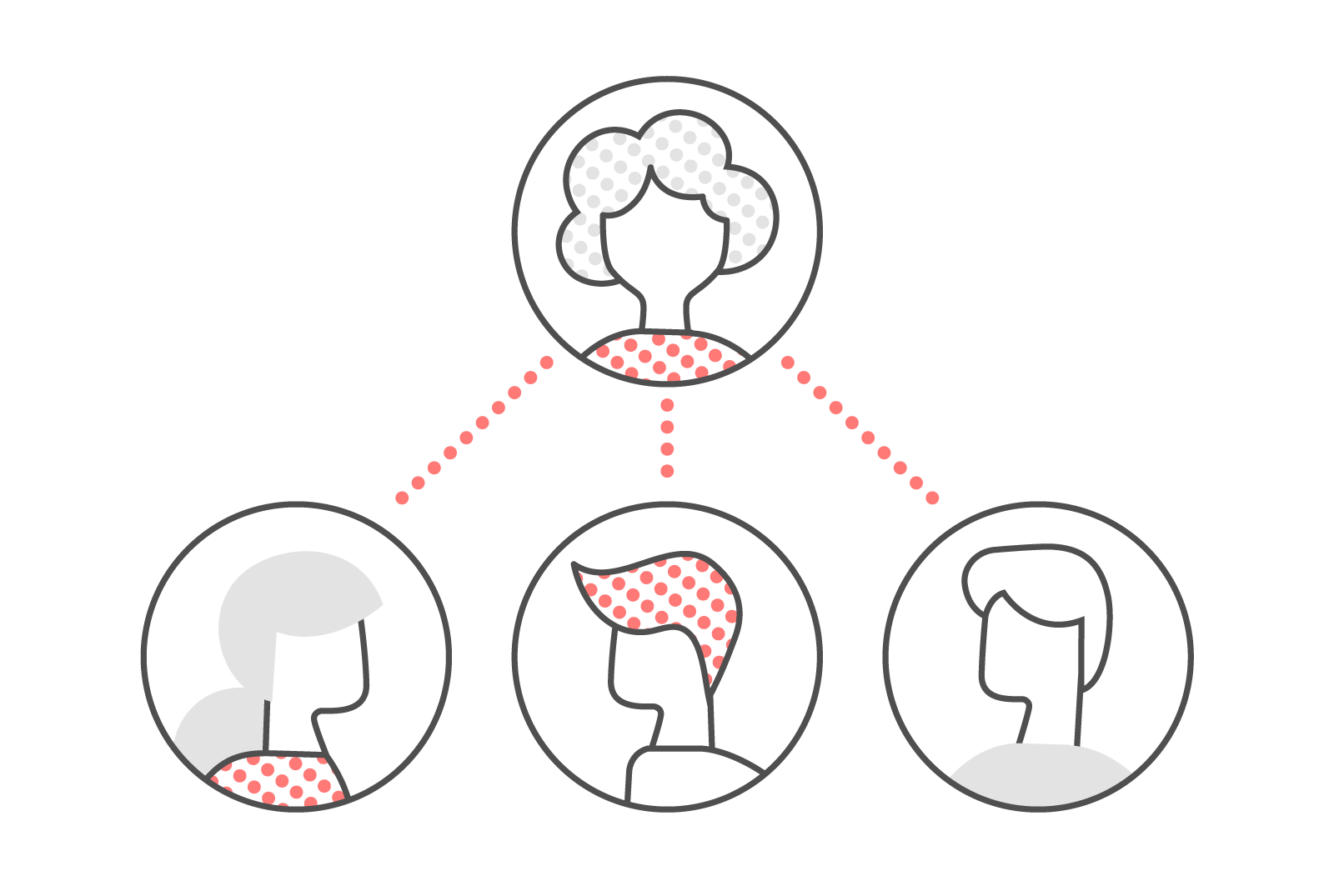What’s right for your company? Decision making in 3 different organizational structures

Perhaps the most important contributor to the way decisions are made in a company is its organizational structure. The way relationships are defined between managers and individual contributors in turn defines the mode of communication, the types of conflicts that can arise, and the way teams can resolve them.
To help you understand how decision making varies across companies, we’ve identified three paradigms for organizational structure, and discuss the effect they have on the way we work:

The traditional organizational structure is top-down. Decisions are made at the top and permeate down through layers of management. Think about Apple under Steve Jobs, and the way his vision was omnipresent through the company and its products. Companies like these are led by leaders who bend others to their point of view through charisma—or will.
Most companies are structured this way for two reasons. The first is historical; it’s always been done this way. From government to conglomerates, leadership has been considered a top-down affair for centuries. The second is about competence. Decision making involves a complex set of skills: being able to synthesize information, assess risk, and incorporate divergent feedback. It’s likely that only a few people in an organization have all these talents, and they tend to be leaders.
- Velocity: Fast. Because there is a clear decision maker decisions are made as quickly as they can make that decision.
- Proximity: Low. A person (manager) spending little time on a project ends up making the decision
- Buy-in: (Possibly) Low. People doing the work might not agree with the the decision maker’s choice, which can be demoralizing.
- Empowerment of individuals: Low. Because management calls the shots, great ICs are under-leveraged.
- Decision making ease: High. Managers are generally skilled at incorporating feedback and making complex decisions.

Perhaps as a revolt against top down thinking, are the companies that employ consensus building to make decisions. They will open up problems to large groups (perhaps the entire organization) for discussion and input, and do not rely a leader to make all the decisions. Instead, decision-making is a collective process in which feedback is solicited from all stakeholders, and decisions are not made until all stakeholders are bought-in.
In contrast to the Top Down organization, Consensus orgs are highly egalitarian and inclusive. Under this kind of structure, managers will will bring in stakeholders from different departments in order to get multiple points of view before tackling a decision. This doesn’t necessarily mean every single person must vote “yes” for an idea to happen. Frameworks like Robert’s Rules of Order allows for majority rule while still making sure to bring disagreements out in the open. Decision making is certainly a slower process in a consensus org, but everyone has an opportunity to feel heard and in turn, allows companies to surface innovative ideas from any place in the company—not just one charismatic leader.
- Velocity: Slow. It takes longer to take action because you require consensus. Decisions are a often a result of politics or endurance.
- Proximity: Medium. Multiple people thinking deeply about a project are making the decision.
- Buy-in: High. Because teams are actively soliciting and incorporating feedback, buy-in is high.
- Empowerment of individuals: Medium. It’s easier for great ideas to come from anywhere in the company, but these can be diluted by groupthink.
- Decision making ease: Low. Groups are notoriously poor at making decisions easily. Managing by consensus means working through a challenge until people either acquiesce or are convinced.

The distributed system of decision-making is a hybrid approach between Top Down and Consensus. There is a clear decision maker for each decision, but it’s not necessarily a leader or manager. Instead, each decision is made by the the person closest to the work, even an individual contributor. In a distributed system the person responsible for making decisions, has an obligation to seek out feedback and input from lots of different people—but ultimately the decision rests with that individual to make the final call.
This can be tricky to get right. As mentioned earlier, decision making requires a particular set of aptitudes, and not everyone in an org has those capabilities. Because of this, the process can be harder, even overwhelming, and mentors and managers must be open-minded and compassionate when the decision responsibility falls to someone with less experience. Unlike Top Down structures, it can take time to discover and understand who the decision maker actually should be. In short, it takes a lot of effort.
But the rewards are huge. When the person making the decision on a project is the person most familiar with the work—rather than an executive with little subject matter expertise—the results are stronger. And when employees feel empowered to make those decisions, they contribute their best work.
- Velocity: Medium. Because there is one decision maker, decisions can be made quickly. That said, they must take time to hear feedback from stakeholders.
- Proximity: High. A single person thinking deeply about a project makes the decision.
- Buy-in: Medium. Everyone has a chance to feel heard, but not all feedback must be incorporated. It is up to the decision maker’s discretion.
- Empowerment of individuals: High. While decisions are open to contributions from lots of places, the decision-making power is concentrated on an individual.
- Decision making ease: Medium. While ICs may not start with strong decision making skills, they are supported through mentorship, feedback, and manager expertise. Growth and development can be harder, but is ultimately more rewarding.
Which decision making model does your team or company follow? Tell us in the comments.
More Issues
